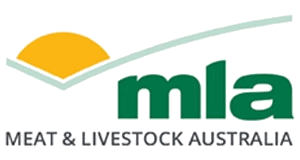Australian Cattle and Sheep Market Report update
Cattle market
The cattle market generally eased this week, with the exception of the Dairy Cow Indicator. The easing in prices has been motivated by a slight decline in quality. Overall cattle yardings lifted by 5,064 head or 8% to 66,907 head, and Queensland experienced the seventh highest yarding on record at 30,929 head,
The Restocker Yearling Heifer Indicator eased by 27¢ to 272¢/kg liveweight (lwt) and yardings lifted by 2,325 to 4,481 head. Most of the lift came from Queensland, which increased by 978 head. At Roma, many of the previous week’s prices could not hold over to this week, particularly for lightweight yearling heifers. Market reports indicated buyers were more selective on light weight cattle and aimed for heavier cattle. Due to dry conditions, producers are offloading more lightweight cattle. There was also limited restocker cattle as most weaners were sent to northern Australia.
The Feeder Steer Indicator eased by 13¢ to 354¢/kg lwt, with prices easing in all states except for SA. Yardings lifted by 4,567 or a 29% lift to 10,978 head. At Dalby, lightweight yearling heifers returning to the paddock sold 15¢/kg cheaper. At Blackall, prices were 22% above the last sale due to good quality heavy feeder steers and heifers on offer. Market reports have indicated demand for heavier cattle and a lack of supply of cattle, particularly in southern Australia due to poor seasonal conditions.
Sheep market
There were mixed results in the sheep market this week. Notably, the Light Lamb Indicator and the Mutton Indicator both lifted by 2¢ to 10¢. Sheep yardings eased by just over 1,000 head and lamb yardings followed a similar trend, easing by just under 10,000 head, totalling a 11,011 head reduction to 255,438 head.
Overall market reports have outlined a consistent trend of declining quality of old season lambs and more interest in new season lambs.
Despite the Heavy Lamb Indicator easing by 9¢ to 774¢/kg carcase weight (cwt), there continues to be demand for well-finished lambs. There are also signs of grain-assisted lambs coming to market and less interest in older light lambs. At Wagga, 14,350 new-season lambs were yarded, with a significant proportion being trade and heavy export lambs.
Slaughter
Week ending 20 September 2024
Cattle slaughter eased by 210 to 140,192 head, however slaughter has remained stable overall, with minor fluctuations in Queensland, NSW, Victoria and WA. Queensland slaughter eased by 628 to 74,354 head, while NSW slaughtered lifted by 160 head. Slaughter year-to-date is 10% higher, with significant lifts in both Queensland and Victorian slaughter (12% and 41% respectively).
Lamb slaughter continued to ease by 22,289 to 423,435 head and remained 11% below 2023 slaughter figures. Slaughter dropped in most states except for Tasmania, where slaughter lifted by 1,649 head. Notably, Victorian slaughter eased by 20,458 head, a 9% drop compared to last week.
Sheep slaughter told a very different story, lifting by 8,740 to 221,353 head (marking it as the largest sheep slaughter since the 2019 drought). Victorian sheep slaughter lifted by 6,575 to 69,013 head, the second-largest sheep slaughter in the last four years. WA sheep slaughter rose by 2,113 head, while NSW slaughter eased by 421 head.
Attribute content to: Emily Tan, MLA Market Information Analyst
